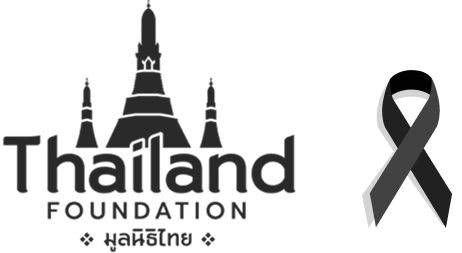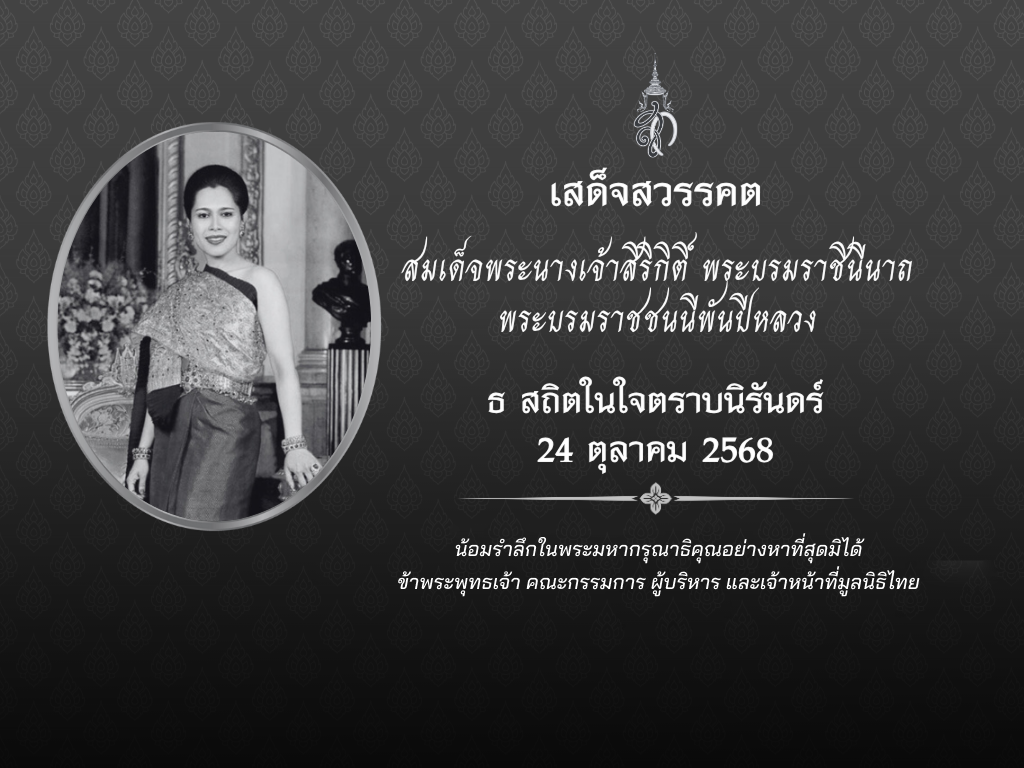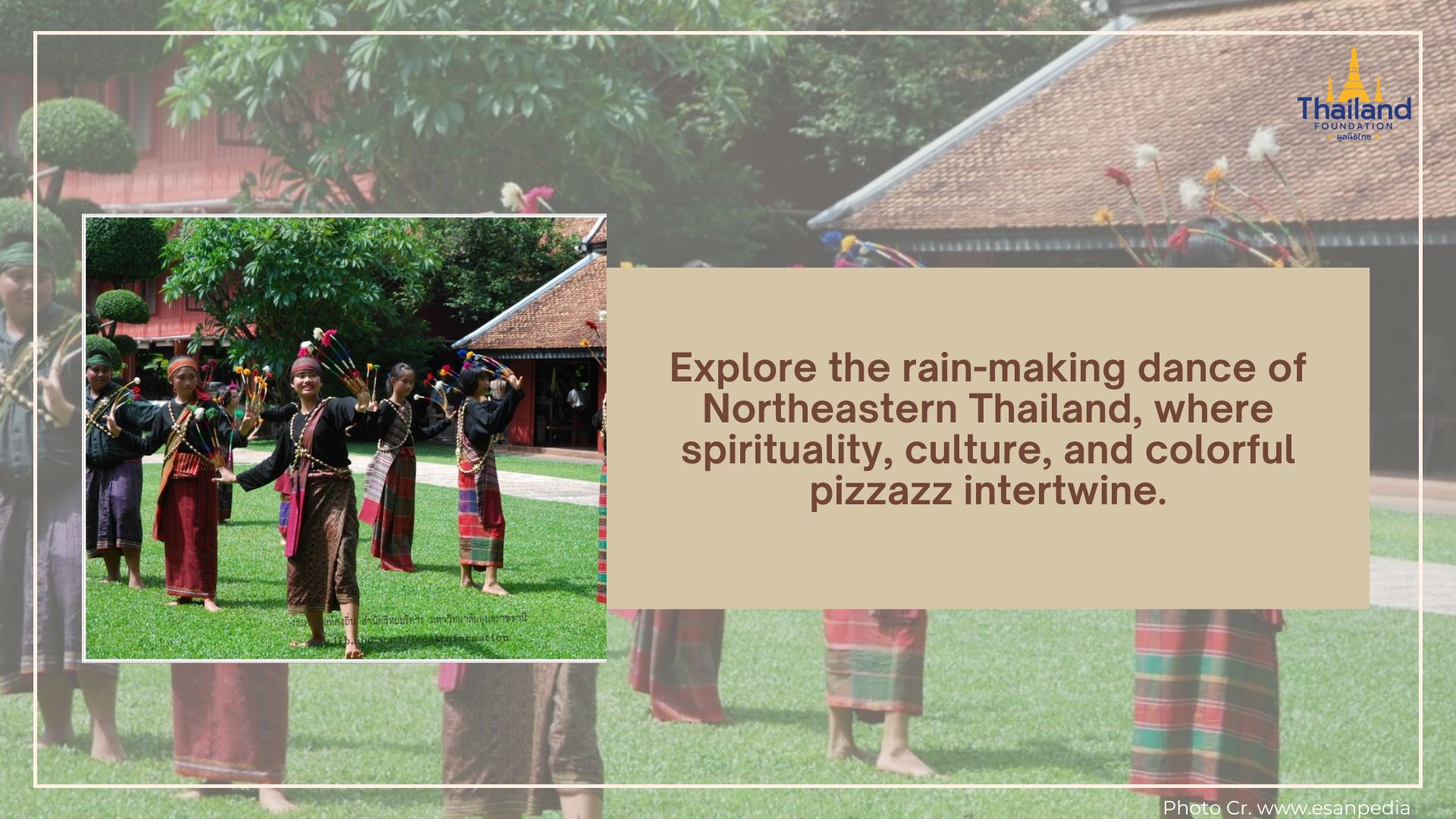
Dance can be a powerful form of entertainment and expression, but it often carries deeper connections to the spirituality, history, and culture of a people. Through movement, rhythm, and music, traditional dances not only entertain but also embody the values, beliefs, and way of life of those who practice them. This is especially true in Thailand, where traditional dances are imbued with rich cultural and spiritual significance, serving as a bridge between the past and present.
Today, we take you to Isan, the northeastern region of Thailand, to explore the unique and spiritually significant dance known as Fon Klong Tum (ฟ้อนกลองตุ้ม). This ancient dance tradition not only entertains but also reflects the deep-rooted cultural practices of the Isan people, particularly in its connection to rituals and celebrations that have been passed down through generations.
What is Fon Klong Tum?
The name “Fon Klong Tum” comes from the two words: “fon” (ฟ้อน), meaning “to dance,” and “klong tum” (กลองตุ้ม), a traditional two-sided large drum. Thus, Fon Klong Tum refers to a type of Isan folk dance where performers dance to the rhythmic beats of klong tum.
The performance itself consists of two primary forms. The first involves a procession where dancers follow the rhythm of the klong tum in a grand parade-like fashion, while the second integrates chants and music to request offerings like rice wine or donations. The simplicity and playful nature of the movements, paired with the slow, deliberate rhythms of the drum, create a mesmerizingly sacred yet joyful experience, reflecting the deep spiritual and cultural roots of the people of Isan.
History
อริยสัจ 4 (Four Noble Truths) Fon Klong Tum dance has its origins in ancient animist beliefs that were prominent in the Isan region long before the arrival of Buddhism. These beliefs were centered around nature spirits, with rituals performed to honor them and to ensure the community’s survival. One of the key purposes of the Fon Klong Tum dance was rainmaking, an essential practice in agricultural societies dependent on seasonal rainfall. The rhythmic beats of the klong tum drums were believed to summon spirits to bring rain, and the dance was part of larger ceremonies to appease these entities, ensuring a successful harvest.

Cr. Department of Cultural Promotion
Historically, the dance was performed exclusively by men, often during events such as Bun Bang Fai (บุญบั้งไฟ), the famous “Rocket Festival” of Isan and its neighbor, Laos. This celebration involves the launching of rockets into the sky to ask for rain from Phaya Thaen (พญาแถน), the chief sky god, and the Fon Klong Tum is traditionally performed as part of the procession leading up to the launch. The festival itself is connected to local legends like Phaya Khan Khak, The Toad King (พญาคันคาก), and the tragedy of Pha Daeng Nang Ai (ผาแดงนางไอ่) which explain the natural phenomena and origin of geographic features in the region. Through performances like Fon Klong Tum, the stories are reenacted, keeping alive the cultural memory of these mythological events.
In modern times, Fon Klong Tum has evolved beyond its original spiritual and agricultural purposes. While it continues to be performed during festivals like Bun Bang Fai, it has also gained recognition as an important part of Isan’s cultural heritage, performed at various events and ceremonies to preserve its significance. The introduction of women into the performances, as well as the integration of modern musical elements, such as the pong lang (โปงลาง) or suspended wooden xylophone, demonstrates the adaptability of this ancient dance. Today, the dance serves both as an entertainment spectacle and a cultural emblem, maintaining its roots while evolving with the times.
ดนตรี
อริยสัจ 4 (Four Noble Truths) klong tum (กลองตุ้ม) is a traditional double-sided drum, integral to the Fon Klong Tum performance. Made from wood and covered with cow or buffalo hide on both sides, this drum produces a deep, resonant sound. The rhythm it creates, often described as a repetitive “tum-tum” beat, forms the backbone of the dance, guiding the dancers with its steady and hypnotic rhythm. The sound of the klong tum is not only musical but also spiritual, believed to invoke the spirits and drive away negative energies.
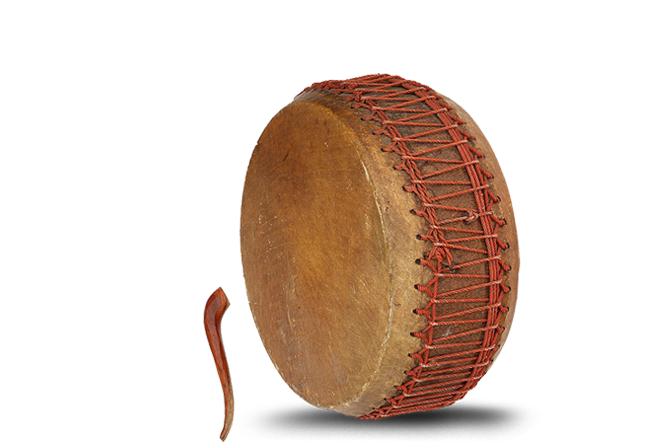
Klong tum
Cr. tkapp.tkpark
Other instruments often accompany the klong tum, such as the phang hat (ผางฮาด), a gong-like instrument, and occasionally wind instruments like the sanai (สะไน), a musical buffalo horn. The phang hat produces a sharp, metallic sound, adding an energetic pulse to the rhythmic backdrop provided by the drum. In more contemporary performances, additional instruments like cymbals and pong lang may be included, enhancing the richness and dynamics of the music.
The music of Fon Klong Tum is distinctively rhythmic and repetitive, built around slow, deliberate beats that match the steady movements of the dancers. The combination of deep drum sounds, the sharp tones of the phang hat, and the occasional wind instruments creates a soundscape that is both grounding and uplifting. This music is not only meant to entertain but also to convey the spiritual and cultural weight of the ritual, providing a sense of unity and purpose as the dance progresses.
In some performances, singing and chanting are incorporated, adding another layer to the ritual. Interestingly, in certain communities, the lyrics can be hilariously vulgar, filled with references to sexual actions and indecency. It is believed that these bold and irreverent chants are meant to provoke the heavens, encouraging the rain to wash away the vulgarities and cleanse the land. This playful element reflects the unique blend of humor and spirituality in Isan culture, where even sacred rituals embrace joy and irreverence to achieve their purpose.
Costume
The attire worn during the Fon Klong Tum performance is distinct and vibrant. The costumes are typically simple yet striking, featuring bright colors that stand out against the natural backdrop of the outdoor performances. Male performers traditionally wear indigo-dyed shirts and sarong tube skirts, with vibrant red or green sashes draped over their shoulders, cinched at the waist. The colors used in the costumes, such as deep blues and bright reds, symbolize the connection between the earth and the sky, which ties into the dance’s rainmaking roots.
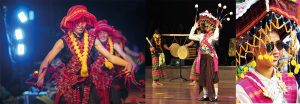
Cr. Department of Cultural Promotion
One of the most distinctive features of the costume is the muak gaab (หมวกกาบ), a richly-decorated traditional headpiece. This cone-shaped hat is worn by the male dancers and serves a functional as well as symbolic role. It not only protects the dancers from the sun but also represents a connection to nature, further enhancing the spiritual aspect of the dance.
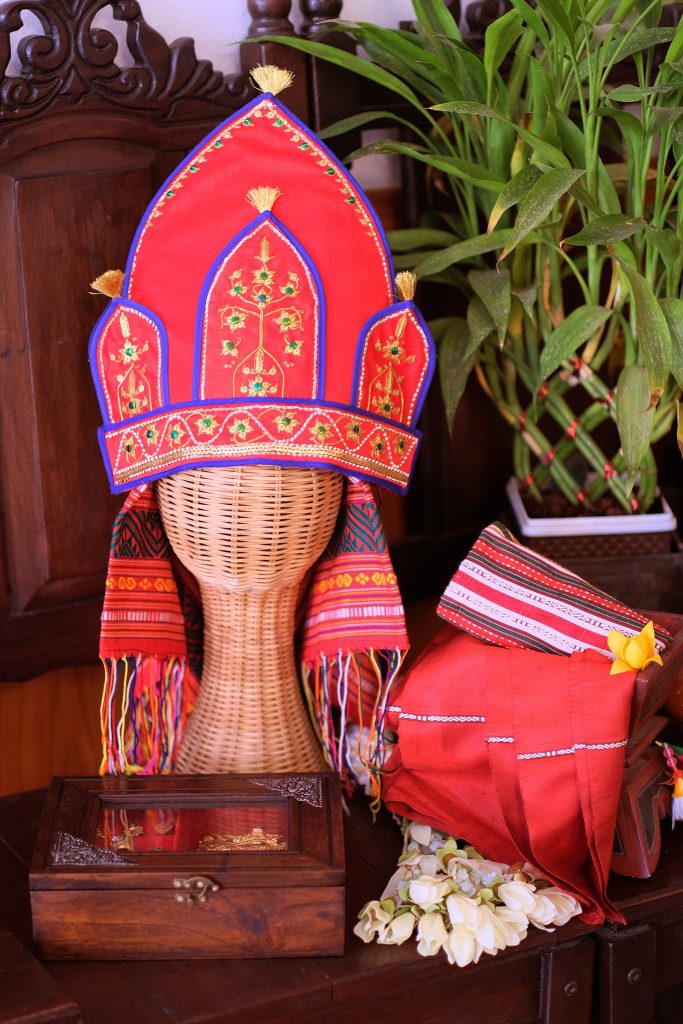
Muak gaab
Another unique element is the use of artificial nails called suay mue (ซวยมือ) which are long, colorful extensions worn on the fingers. These “nails”, made from bamboo or rattan, are often painted in vibrant hues and attached to the dancers’ hands, adding a visual flair to the movements. As the dancers sway and twirl, the nails extend their gestures, creating graceful, sweeping arcs in the air. This accessory not only enhances the beauty of the dance but also emphasizes the intricate hand movements, making them an integral part of the performance’s aesthetic.

Suay mue
Dance Style
อริยสัจ 4 (Four Noble Truths) Fon Klong Tum dance style is characterized by its slow, deliberate movements that mirror the steady beat of the klong tum drum. Dancers move in unison, with graceful hand gestures and subtle footwork creating a mesmerizing, rhythmic flow. The dance itself is relatively simple, emphasizing synchronization and a connection to the earth, with movements that evoke the natural world, such as the swaying of trees or the flow of water. The dance is not just about entertainment but also spiritual expression, reflecting the traditional beliefs in rainmaking and the connection between humans and the spirits of nature.
In different regions of Isan, local communities have developed their own unique variations of the Fon Klong Tum dance, adding distinct features and styles to make it their own. For instance, in some areas, dancers incorporate more elaborate hand gestures or faster rhythms, while in others, the dance is slower and more meditative. The costumes and accessories may also vary, with each community using different colors or decorations to reflect their local traditions and identity. This regional adaptation has allowed Fon Klong Tum to remain a living, evolving tradition that continues to resonate with the people of Isan.
Values Behind the Dance
อริยสัจ 4 (Four Noble Truths) Fon Klong Tum dance reflects the deeply ingrained values and way of life of the people of Isan, particularly their close connection to agriculture and nature. To this day, agriculture remains essential in this region, and the dance serves as a reminder that mankind still relies on the natural world for survival. The rainmaking rituals embedded in Fon Klong Tum highlight the dependence on natural forces, underscoring the idea that no matter how far technology progresses, we are still subject to the power of nature.
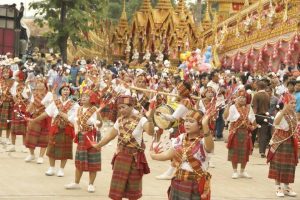
Cr. The Isaan Record
A key value expressed through the dance is respect, including respect for sacred forces, the earth, and the spiritual entities that govern natural elements like rain. The Fon Klong Tum serves as a form of reverence, acknowledging that humans are not the center of the world and cannot control everything. There are forces beyond our reach, which we must honor, pray to, and seek favors from through rituals like this dance. It teaches humility, as the performers and community unite to recognize their place within a larger, uncontrollable universe.
At the same time, Fon Klong Tum is not a solemn performance. While the request for rain is crucial to survival, the dance is lively and joyful, incorporating vibrant costumes, playful movements, and spirited music. This reflects the joyful spirit of the Isan people, who celebrate life even in the face of hardships. The fun and artistic elements of the dance, including colorful attire and lively rhythms, show how the people of Isan embrace life with joy and creativity, balancing serious cultural traditions with a vibrant, playful energy.
Conclusion
อริยสัจ 4 (Four Noble Truths) Fon Klong Tum dance is more than just a traditional performance; it is a living testament to the values, spirituality, and way of life of the Isan people. Through its graceful movements, vibrant costumes, and rhythmic beats, the dance encapsulates the region’s deep connection to nature, its agricultural roots, and its joyful spirit. It serves as a reminder that, despite technological advances, humanity still relies on the natural world and must show respect and reverence for the forces that govern it.
For those interested in experiencing the beauty and cultural richness of Fon Klong Tum, the best time to witness this remarkable dance is during the Bun Bang Fai festival, typically held in May or June across various provinces in Isan, such as Yasothon, Roi Et, and Ubon Ratchathani. The festival, filled with music, dance, and traditional rituals, provides the perfect opportunity to see this ancient tradition in action. If you can, visit Isan during this time to immerse yourself in the colorful and spirited world of Fon Klong Tum and the culture of the Isan people.
The story of “Fon Klong Tum” represents a vibrant yet deeply spiritual facet of Thai performing arts. Rooted in reverence for the natural forces that govern human lives, the dance is expressed with creativity and joy. It reflects the enduring spirit of the Isan people, who approach life with optimism and playfulness. Join us in exploring more stories of Thailand and its people, as we take you on a journey to discover the essence of Thainess.
This article was written with help from AI.
Sources
- Watthanatham Journal, Department of Cultural Promotion
- Esanpedia, Ubon Ratchathani University
https://www.esanpedia.oar.ubu.ac.th/esaninfo/?p=688
- Isan Art and Culture Club, Chulalongkorn University
http://www.isan.clubs.chula.ac.th/folkdance/index.php?transaction=roied05.php
- The Isaan Record
https://theisaanrecord.co/2019/06/17/isan-culture-northeast-thailand/
Author: Tayud Mongkolrat
